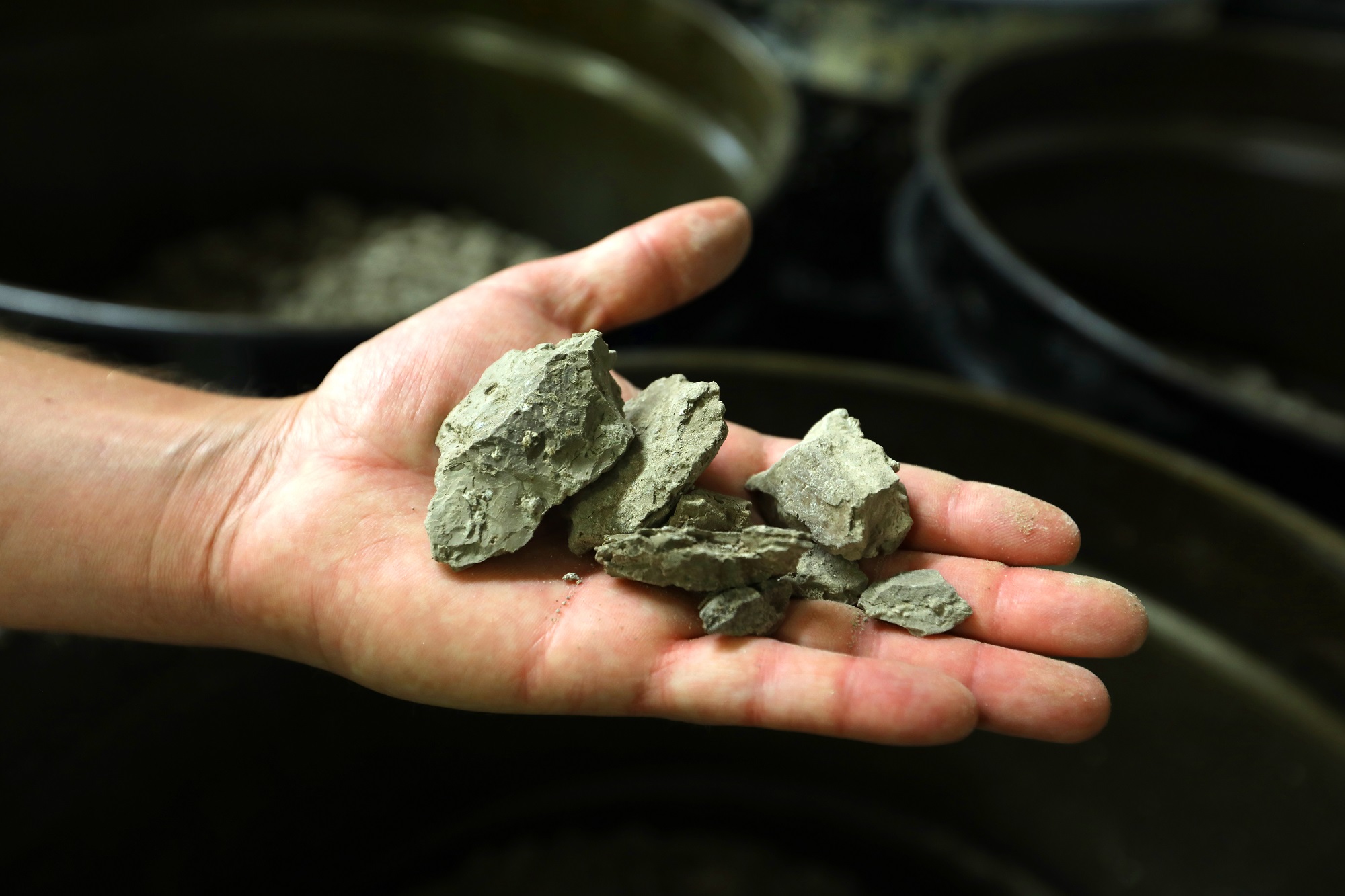

At first glance, the McDermitt Caldera might feel like the edge of the Earth. This oblong maze of rocky vales straddles the arid Nevada-Oregon borderlands, in one of the least densely populated parts of North America.
But the future of the modern world depends on the future of places like the McDermitt Caldera, which has the potential to be the largest known source of lithium on the planet. Where today’s world runs on hydrocarbons, tomorrow’s may very well rely on the element for an expanding offering of lithium-ion batteries. The flaky silver metal is a necessity for these batteries that we already use, and which we’ll likely use in far greater numbers to support mobile phones, electric cars, and large electric grids.
Which is why it matters a ton where we get our lithium from. A new study, published in the journal Science Advances today, suggests that McDermitt Caldera contains even more lithium than previously thought and outlines how the yet-to-be-discovered stores could be extracted. But these results are unlikely to ease the criticisms about the environmental costs of mining the substance.
[Related: Why solid state batteries are the next frontier for EV makers]
By 2030, the world may require more than a megaton of lithium every year. If previous geological surveys are correct, then the McDermitt Caldera—the remnants of a 16-million-old volcanic supereruption—could contain as many as 100 megatons of the metal.
“It’s a huge, massive feature that has a lot of lithium in it,” Tom Benson, one of the authors of the new paper and a volcanologist at Columbia University and the Lithium Americas Corporation.
One high-profile project, partly run by Lithium Americas Corporation, proposes a 17,933-acre mine in the Thacker Pass, on the Nevada side of the border at the caldera’s southern edge. The project is contentious: Thacker Pass (or Peehee Mu’huh in Northern Paiute) sits on land that many local Indigenous groups consider sacred. Native American activists are continuing to fight a plan to expand the mine-exploration area in court.
But not all of the lithium under McDermitt’s rocky sands ranks the same. Most of the desired metal there comes in the form of a mineral called smectite; under certain conditions, smectite can transform into a different mineral called illite that can sometimes also be processed for lithium. Benson and his colleagues studied samples of both smectite and illite drilled from the ground throughout the caldera. “There’s lithium everywhere you drill,” he says.
Previously, geologists assumed that you could find both smectite and illite in a wide distribution across the caldera, but the authors only found the latter in high concentrations in the caldera’s south, around Thacker Pass. “It’s constrained to this area,” explains Benson.

That’s important. Benson and colleagues think that the caldera’s illite formed when lithium-rich fluid, heated by the underlying volcano, washed over smectite. In the process, the mineral absorbed much of the lithium. Consequently, they project the illite in Thacker Pass holds more than twice as much lithium than the neighboring smectite.
“That’s really helpful to change exploration strategy,” Benson says. “Now we know we have to stick in the Thacker Pass area if we want to find and mine that illite.”
Some of Thacker Pass’s proponents believe that would result in fewer costs and less damage from mining. Anyone who deals with lithium is, on some level, aware of the environmental costs. The recovery process produces pollutants like heavy metals, sucks up water, and emits tons of greenhouse gases. By one estimate, fitting a new electric vehicle with its lithium battery can result in upwards of 70 percent more carbon emissions than building an equivalent petrol-powered car (although the average electric car will more than make up the difference with day-to-day use).
That said, not all extraction is the same. There are two main types of lithium sources: brine recovery and hard-rock mining. Some of the lithium we use comes from super salty pools. Over millions of years, rainwater percolates through lithium-containing rocks, dissolves the metal, and carries it to underground aquifers. Today, humans pump brine to the surface, evaporate the water, add a slurry of hydrated lime to keep out unwanted metals, and extract the lithium that’s left behind. Much of the world’s brine lithium today comes from the “lithium triangle” of Argentina, Bolivia, and Chile—one of the world’s driest regions.
Alternatively, we can directly mine lithium ores from the earth and process them as we would with most other metals. Separating lithium from ore typically involves crushing the rock and heating it up to temperatures of more than 1,000 degrees Fahrenheit. Getting to those high temperatures often requires fossil fuels in the first place. This method is less laborious and costly than brine extraction, but also far more carbon-intensive.
[Related: Inside the high-powered process that could recycle rare earth metals]
McDermitt Caldera’s smectite and illite belong to what some lithium watchers see as a new third category of extraction: volcanic sedimentary lithium. When volcanic minerals containing lithium flow into nearby valleys and react with the loose dirt, they leave behind lithium-rich sediments that require little energy and processing to separate.
With the new alternative, mining proponents claim they can drastically reduce the environmental impact of their current and future activities at Thacker Pass. And the research by Benson’s team seems to suggest that, if lithium companies probe in the right places, they might get rewarded more for their efforts.
But this is likely little comfort to lithium-mining opponents in Oregon and Nevada, whose criticisms will be considered as the Bureau of Land Management maps out drilling in the deposit. Their case parallels those of Indigenous Chileans who oppose lithium extraction near their homes in the Atacama and locals fighting a lithium mining project near Portugal’s northern border. Together, they’re fighting a world that’s growing hungrier for lithium, along with new ways and places to exploit it.